第72章 MONEY OR SIMPLE CIRCULATION(53)
What should have been demonstrated was that the price of commodities or the value of gold depends on the amount of gold in circulation.The proof consists in postulating what has to be proved,i.e.,that any quantity of the precious metal serving as money,regardless of its relation to its intrinsic value,must become a medium of circulation,or coin,and thus a token of value for the commodities in circulation regardless of the total amount of their value.In other words,this proof rests on disregarding all functions performed by money except its function as a medium of circulation.
When driven into a corner,as for instance in his controversy with Bosanquet,Ricardo --entirely dominated by the phenomenon of value-tokens depreciating because of their quantity,--resorts to dogmatic assertion.[14]
If Ricardo had presented his theory in abstract form,as we have done,without introducing concrete circumstances and incidental aspects which represent digressions from the main problem,its hollowness would have been quite obvious.But he gives the whole analysis an international veneer.
It is easy to show,however,that the apparent magnitude of scale can in no way alter the insignificance of the basic ideas.
The first proposition,therefore,was:the quantity of specie in circulation is normal if it is determined by the aggregate value of commodities in circulation estimated in terms of the metallic value of specie.Adjusted for the international scene this reads:when circulation is in a normal state,the amount of money in each country is commensurate with its wealth and industry.The value of money in circulation corresponds to its real value,i.e.,its costs of production:in other words,money has the same value in all countries.[15]Money therefore would never be transferred (exported or imported)from one country to another.A state of equilibrium would thus prevail between the currencies (the total volume of money in circulation)of different countries.The appropriate level of national currency is now expressed in the form of international currency-equilibrium,and this means in fact simply that nationality does not affect the general economic law at all.
We have now reached again the same crucial point as before.In what way is the appropriate level upset,which now reads as follows:in what way is the international equilibrium of currencies upset,or why does money cease to have the same value in all countries,or finally why does it cease to have its specific value in each country?Just as previously the appropriate level was upset because the volume of gold in circulation increased or decreased while the aggregate value of commodities remained unchanged,or because the quantity of money in circulation remained constant while the exchange-value of commodities increased or decreased;so now the international level,which is determined by the value of the metal,is upset because the amount of gold is augmented in one country as a result of the discovery of new gold mines in that country,or because the aggregate exchange-value of the commodities in circulation in a particular country increases or decreases.Just as previously the output of precious metals was diminished or enlarged in accordance with the need for reducing or expanding the currency,and in accordance with it to lower or raise commodity-prices,so now the same effect is achieved by export and import from one country to another.
In a country where prices have risen and,owing to expanded circulation,the value of gold has fallen below its metallic value,gold would be depreciated in relation to other countries,and the prices of commodities would consequently be higher than in other countries.Gold would,therefore,be exported and commodities imported.The opposite movement would take place in the reverse situation.Just as previously the output of gold continued until the proper ratio of values between gold and commodities was re-established,so now the import or export of gold,accompanied by a rise or fall in commodity-prices,would continue until equilibrium of the international currencies had been re-established.Just as in the first example the output of gold expanded or diminished only because gold stood above or below its value,so now the international movement of gold is brought about by the same cause.Just as in the former example the quantity of metal in circulation and thereby prices were affected by every change in gold output,so now they are affected similarly by international import and export of gold.When the relative value of gold and commodities,or the normal quantity of means of circulation,is established,no further production of gold takes place in the former case,and no more export or import of gold in the latter,except to replace worn-out coin and for the use of the luxury industry.It thus follows,"that the temptation to export money in exchange for goods,or what is termed an unfavourable balance of trade,never arises but from a redundant currency".[16]
The import or export of gold is invariably brought about by the metal being underrated or overrated owing to an expansion of the currency above its proper level or its contraction below that level.[17]It follows further:since the output of gold is expanded or diminished in our first case,and gold is imported or exported in our second case,only because its quantity has risen above its proper level or fallen below it,because it is rated above its metallic value or below it,and consequently commodity-prices are too high or too low,every one of these movements acts as its own corrective,for,by augmenting or curtailing the amount of money in circulation,prices are reduced again to their correct level,which is determined by the value of gold and the value of commodities in the first case,and by the international level of currencies in the second.